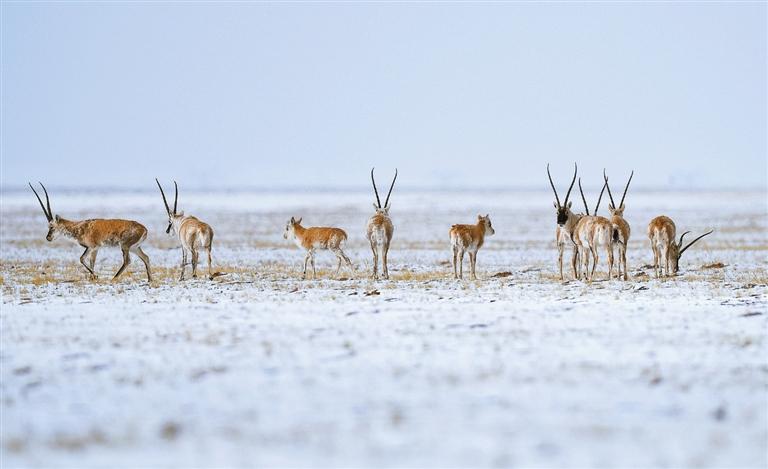
ACROSS plateaus, mountains, and rainforests, wildlife is thriving in China as the country strives to establish the world’s largest national park system by 2035. New technologies have been extensively employed to assist wildlife protection, Xinhua reported yesterday, which marked the International Day for Biological Diversity. In the Northeast China Tiger and Leopard National Park (NCTLNP), which spans over 14,000 square kilometers, it takes just a few seconds to trace a wild Siberian tiger, thanks to the park’s network of more than 20,000 infrared cameras. Situated in Jilin and Heilongjiang provinces, the park began trial operations in 2017 and was officially established in 2021. An intelligent monitoring system collects and records wildlife data real time at the park. “Last year, 20 Siberian tiger cubs and 15 Amur leopard cubs were born in the park. Back in 1998, there were only about 12 wild Siberian tigers in China,” said Feng Limin, deputy director of the monitoring and research center for Siberian tigers and Amur leopards under the National Forestry and Grassland Administration. Also known as the Amur tiger, the Siberian tiger is one of the world’s most endangered animals and a flagship species of the forest ecosystem, mainly living in Russia’s Far East and Northeast China. About 500 Siberian tigers are believed to live in the wild today. Among the first countries to sign and ratify the Convention on Biological Diversity, China in 2021 established its first batch of national parks, on a land of 230,000 square kilometers. These parks, namely Sanjiangyuan National Park, the Giant Panda National Park, the NCTLNP, Hainan Tropical Rainforest National Park and Wuyishan National Park, are home to nearly 30% of the country’s key terrestrial wildlife species. These national parks have made a quantum leap in wildlife conservation. The population of Hainan gibbons, a rare primate that lives in Hainan Tropical Rainforest National Park, had risen to 37 in 2022 from 13 in 2003. Sanjiangyuan National Park, meanwhile, is now home to more than 70,000 Tibetan antelopes, growing from less than 20,000 in the 1990s. To better protect wildlife species and their habitats, China also designated 49 candidate areas, covering around 1.1 million square kilometers, for future national parks. There are more than 5,000 wild vertebrate species and 29,000 plant species in these candidate areas, comprising over 80% of China’s most protected fauna and flora. Notably, the Qinghai-Xizang Plateau, which is the highest plateau in the world, has 13 candidate areas. Over the years, Qiangtang Nature Reserve in Southwest China’s Xizang Autonomous Region, one of the candidate areas, has ramped up efforts to protect wildlife. At an average altitude of over 4,500 meters, wildlife rangers in this nature reserve brave thin air and blizzards to patrol protected areas and monitor wildlife. The number of wild animals such as Tibetan antelopes and yaks has increased significantly in this region. “The construction of the national park system greatly improves the protection of biodiversity and safeguards the authenticity and integrity of the ecosystem. National parks are becoming ideal homes for rare species,” said He Xingyuan, a researcher at the Institute of Applied Ecology of the Chinese Academy of Sciences.(Xinhua) | 
